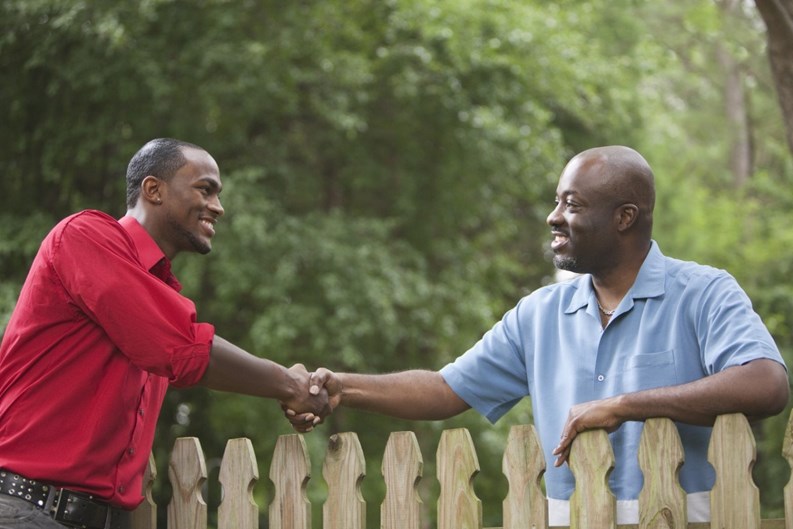From Miami’s lavish suburbs to Fort Lauderdale’s vibrant downtown to West Palm’s glamorous beachscapes, indeed South Florida is a gorgeous metropolis; vistas of turquoise water merge with miles of white sand, all under a consistently blue sky; swaying palm trees complete an exotic region filled with history and culture. Condos, co-ops, high-rises, and planned developments scatter the landscape, striving for the best views and finest locations. Annually, the area attracts over 12 million seasonal residents and visitors to augment both the general and tourist economy.
Conversely, the transient nature of the region is noteworthy. Often, residents crave a sense of community, which can be difficult when the dwellers next door might be college students who graduate and move on, “snow birds” who flee from unfriendly weather on a seasonal basis, frequent-travel immigrants, or senior citizens who pass away. Each of these scenarios is common in South Florida, and all the while, a sense of community must be organically nurtured and developed—much like a garden—for effectiveness.
High-rise or suburban condo communities do not automatically make for this coveted sense of a community; in fact, neighbors having such close proximity to other neighbors can have the opposite effect. If a sense of community is the goal, what is the best way to achieve this network of support and communication? What steps should an HOA take to foster this intangible benefit? What, if any, role should property manager’s play in building community awareness? What can busy residents contribute toward improving the quality of life in the place they call home?
Identifying the Barriers
Gloria Donnelli, CPM, is the owner and president of Elite Management Associates in Pembroke Pines. With over two decades of property management experience, she is well aware of the barriers and benefits with a strong sense of community. “This is a busy world, and activities are often outside of the community,” she says, also citing recent economic trials as challenging for individuals and communities alike.
Todd Schwartz, president of Connection Elevators in Weston, has worked in real estate and property management for almost twenty years, and currently sits on several non-profit committees. As a vendor, Schwartz is often on site, allowing him to develop an unbiased view of what works to enhance urban community atmosphere. He agrees with Donnelli, that a busy lifestyle makes it difficult to capture residents’ attention, and also notes very few residents are originally from the South Florida region. Along with many diverse cultures, a certain segment of the population is transient, as well, including young professionals who travel for work often.
Frequently, Carlos Diaz-Sampol, the co-founder of CADISA Inc. in Miami, hears residents cite time constraints as a reason for rejecting participation in community activities; though, he believes people in society today have a fear of commitment to community involvement, as well. “Most people see board responsibilities as a thankless job with no compensation,” he says.
Regan Marock, LCAM and executive director of KW Property Management and Consulting in Miami, lists a variety of barriers that prevent the formation of a stronger sense of community. He notes renters are not interested in becoming involved often. Also, sometimes, boards want total control and do not allow residents the opportunity to participate. Sadly, there are times when a property management company is not in tune with building a sense of community, too.
Embracing the Benefits
Donnelli, Schwartz, Diaz-Sampol, and Marock agree the benefits of a strong community greatly outweigh the efforts required. Donnelli, for example, has noticed an increase in activities in some communities, renewed interest in newsletters, and better communication as the economy rebounds. Marock says a better flow of information sparks interest, and encourages brainstorming and “intelligence sharing.” Diaz-Sampol thinks communication and sharing promote a sense of belonging, and encourages working together for common goals…“neighbors helping neighbors.”
Schwartz believes a sense of community fosters both tangible and intangible benefits in real and perceived property values. Residents who are happy in their environment tend to show more respect and care for the property. “A happy resident will eagerly recruit others to fill vacancies in the building,” he says. “Improved morale, trust, community pride, and fewer problems are all positive side effects.”
Different Strokes
Every community is different, and will enjoy different programs and activities—one size will never fit all. Newsletters, websites, and welcome committees are excellent methods of sharing community information, and these methods work well with most, if not all, properties.
While Marock believes “newsletters are key,” he also supports other creative ideas. KW Property Management has an information exchange known as KWIX Calls. All 250 associates call in weekly and share ideas that are working, and/or ask for ideas to enhance community programs. KWIX calls are posted online, also, in Spanish and English.
Types of Activities
Several KW properties hold regular BBQ or cookout events, and one community has a really “sweet” way to encourage resident participation: once a month, residents enjoy an ice cream social hosted by a local candy store. Ice cream is a universal treat and greatly encourages meet and greet participation. Marock believes this type of positive interaction improves morale, which translates to a happier resident base with fewer problems and complaints. Typically, residents are more willing to participate and more open to sharing ideas when the building is well organized.
Donnelli is particularly proud of the efforts shown recently by one of the properties managed by Elite. When funds were short, with no budget for a contractor to decorate the building for the holidays, the board and interested committee members had to complete the task themselves. The end result was beautiful, and the community saved valuable funds without sacrifice. After all decorations were situated, the community celebrated with a potluck. Donnelli calls this “frugal thinking,” a win-win for the community, most certainly.
According to Schwartz, before people get involved in community activities, their attention must be acquired, and that is no easy accomplishment. One way, he says, to deliver a message is in the elevators. Most high-rises, condos, and co-ops are multi-storied, and residents spend a few minutes daily riding in the elevators. He installs electronic screens in them, as well as in the lobbies and other key locations in the buildings. The screens show a list activities and news; once a resident leaves the elevator, they are informed and connected.
Diaz-Sampol believes education is the most important element in generating community interest and involvement. “This is best achieved by educating the homeowner from day one on the benefits of living in a community association,” he says. “Once homeowners fully understand the impact an association can have positively—or negatively —on their property value, they are much more likely to become committed volunteers in order to protect their investment.”
Doing It Yourself
Diaz-Sampol’s assessment is certainly on target for Marsha Hoffman, board president of the North Tower at The Point of Aventura, to where she relocated from Long Island 12 years ago. Despite minor adjustments to condo lifestyle, Hoffman loved the home, location, and community. A few years after the move, however, she noticed the building was becoming rundown, and the landscaping needing attention. “I have to do something about my home,” she thought, immediately. Hoffman got elected to the board, where three of the five members were new, too. In a few short months, the property manager left.
Hoffman never flinched; the newly self-managed tower hired an independent property manager, and aimed toward necessary improvements. With 288 units and 32 floors, a staff of 28 was required to maintain the building; Hoffman treats the staff as extended family, offering an appreciation lunch every other month. Everyone—from the valet to the housekeepers and maintenance to security—understands they are appreciated. When Hoffman isn’t busy with the building itself, she works on a social calendar: there are 68 classes offered at the community spa, for instance.
Monthly happy hours, opera nights, a history club, dances, and holiday parties are a few of the activities on Hoffman’s social calendar, and she makes sure the information is always posted in the mail room. Hoffman gives her time and talent to the home and community she loves, and sets the bar to new heights for those who volunteer to make a difference in their communities. “I am always happy to come home,” she says.
Anne Childers is a freelance writer based in Florida and a frequent contributor to The South Florida Cooperator.







Leave a Comment